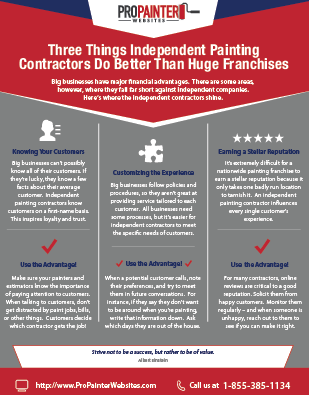Seasonal Factors In Commercial Outside Painting: Secret Insights You Ought To Understand
Seasonal Factors In Commercial Outside Painting: Secret Insights You Ought To Understand
Blog Article
Team Author-Burnham Decker
When you're intending a commercial outside paint project, seasonal aspects can make or damage your outcomes. You'll want to take into consideration exactly how temperature and humidity impact paint application and drying out times. Selecting the ideal period can guarantee your paint sticks appropriately and lasts longer. Yet which periods are really the most effective for this type of job? Allow's check out the key elements that can influence your task's success.
The Impact of Temperature Level on Paint Application
When you're planning an industrial exterior paint project, the temperature can substantially affect how well the paint adheres and dries out.
Preferably, you want to repaint when temperatures vary between 50 ° F and 85 ° F. If it's too cold, the paint might not heal properly, bring about problems like peeling off or breaking.
On the other side, if it's too warm, the paint can dry as well promptly, protecting against proper bond and leading to an unequal coating.
You must also think about the time of day; early morning or late afternoon uses cooler temperature levels, which can be more beneficial.
Always inspect the producer's suggestions for the details paint you're making use of, as they usually offer support on the suitable temperature range for optimum results.
Moisture and Its Effect on Drying Times
Temperature isn't the only environmental factor that affects your business external paint task; moisture plays a considerable role as well. indoor painting twin cities can decrease drying out times considerably, impacting the overall quality of your paint work.
When the air is saturated with wetness, the paint takes longer to heal, which can cause concerns like inadequate attachment and a greater risk of mold development. If you're repainting on an especially humid day, be prepared for extended delay times in between layers.
It's crucial to keep track of local weather and plan appropriately. Preferably, aim for humidity degrees between 40% and 70% for optimal drying.
Keeping these factors in mind guarantees your task stays on track and delivers a long-term surface.
Best Seasons for Commercial Exterior Painting Projects
What's the best season for your business exterior paint jobs?
Spring and early autumn are normally your best bets. Throughout these seasons, temperature levels are moderate, and humidity levels are often lower, creating optimal conditions for paint application and drying out.
Avoid summer's intense heat, which can cause paint to completely dry also quickly, resulting in poor attachment and finish. Likewise, winter's chilly temperatures can prevent proper drying and curing, risking the long life of your paint work.
Go for days with temperature levels between 50 ° F and 85 ° F for ideal results. Remember to examine the neighborhood weather prediction for rain, as wet problems can wreck your job.
Planning around these elements ensures your paint project runs smoothly and lasts much longer.
Conclusion
In conclusion, preparing your industrial outside painting projects around seasonal factors to consider can make a considerable distinction in the result. By organizing job during the suitable temperatures and humidity levels, you'll guarantee much better adhesion and drying times. Remember to watch on local weather prediction and choose the correct time of year-- springtime and early fall are your best options. Taking https://news.artnet.com/buyers-guide/7-questions-celeste-rapone-josh-lilley-2274616 will certainly aid you accomplish a durable and professional coating that lasts.
